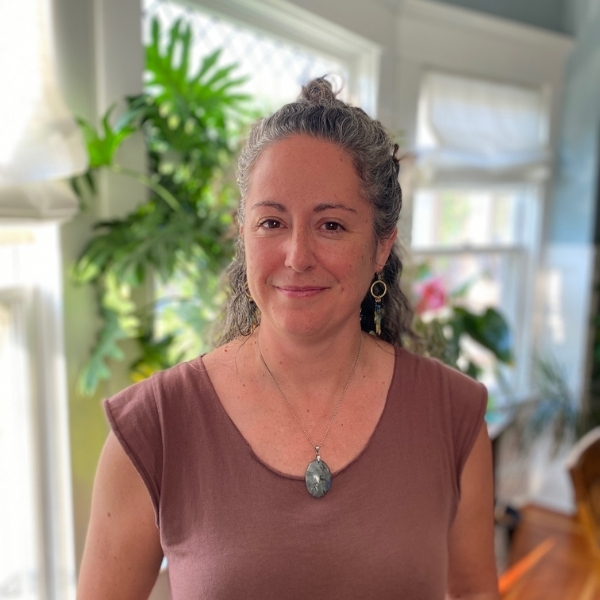
Who Gets to Say You're in Perimenopause?
There’s simmering tension around when we decide that someone has entered the liminal time of perimenopause. This between-time follows our fertile decades of regular ovulation and goes through the time when we no longer ovulate (which is when menopause starts). Perimenopause is the great uncertainty that those of us with a “natural” or “spontaneous” menopause (not caused by medical treatments or surgery) will navigate. The experience of perimenopause includes roller-coaster hormones. Ovulation becomes unpredictable and therefore periods do too.
For many folks it’s helpful to know they’ve entered the bizzarro-world of perimenopause. Naming this time can be a sense-making moment – when we perceive where we are in our biological lives, find a connection to other perimenopausal folks or understand there’s a reason for feeling how we feel. The chance to call oneself perimenopausal can be desirable for these reasons. So this begs the question, when do we get our perimenopause badges? When do we join the club?
Unfortunately, like a lot of healthcare, it’s squishy.
Some people identify perimenopause using age alone – under age 45 you’re not in perimenopause, and over age 45 you are. This is an easy rule to remember, and it works for probably 70% of the population, but for those who go through menopause on the late or early end, it fails by making the call at the wrong time. Still, it does give us a way to guess at the hormonal state without periods to clue us in – which is helpful for folks who’ve had a hysterectomy or are rocking a hormonal IUD.
Some people identify perimenopause using symptom lists – say you’re fatigued, having sleep problems, gaining weight, having brain fog, or noticing itchy ears, vaginal dryness or increasing hair loss; you’ll be told you’re in perimenopause. This method is awkward because it doesn’t account for medical and mental health problems that can lead to similar experiences. And, people who are quite young are apt to think they’re in perimenopause when going off such lists. Personally, I resist this symptom-based definition because it defines perimenopause as a set of discomforts and problems - a strange thing to do for a normal reproductive life event. Medicalizing the female body is not my jam.
So how do I define it? I align with the geeks. The geeks weighed-in on this subject in a group called STRAW – the Stages of Reproductive Aging Workshop. This group published a schema which defined 10 distinct hormonal stages in the female lifespan. For STRAW, someone has entered the perimenopause stage if they had previously normal menstrual cycles but now are repeatedly having irregular cycles (varying in length by 7 days or more from the previous cycle). What I love about this definition is that it waits until we have evidence that the ovaries are behaving differently before calling someone perimenopausal.
Alas, these vastly different ways of defining perimenopause are a great source of tension in healthcare – particularly when a patient thinks they are in perimenopause and their healthcare provider disagrees. It’s obviously invalidating and disorienting for the patient who sees a clear picture based on their experiences and media exposure, and then discovers resistance to this understanding from their provider.
My solution to this frustration is letting people know about another hormonal stage, the one right before perimenopause. It’s called Late Reproductive Age, and it can include slight period changes and slight hormone changes. The ovaries are still getting the job done regularly, but the hormones are moving away from their previous patterns. Having a name for this time separates Late Reproductive Age from our previous hormonal experiences and from the more chaotic hormonal state of perimenopause. This gives everyone what they need: the validation that feels good to the patient, and the biological accuracy that the healthcare provider requires.
Remember that you’re allowed to feel what you feel and experience what you experience and understand your body in your own way, no matter what anyone calls it. If it feels powerful and good to you to accept the label of perimenopause, wear it! And don’t worry what your provider calls it, as long as they’re willing to help with problems that arise.
On the other hand, if labeling yourself as perimenopausal causes distress, fear, or panic, then maybe step away from this label right now. We want to avoid letting the medical understanding of the body interfere with your own body connection. Lean into pleasure and joy and trust, and really listen to what your body is asking for in terms of stress management, nutrition and activity. Honor your intuition about your needs. Our ancestors went through their perimenopauses without having a word for it. The process works - without monitoring or thinking or naming. And eventually, we’re all past the perimenopause time, whether we gave it our attention or not.
Christina Cameli is a nurse-midwife in Portland, Oregon. In her private healthcare practice she supports those in the menopause transition, and as a menopause educator she employs metaphor, levity, and compassion as tools for understanding and inhabiting this unique transition. She loves a good paddle, a cold kombucha, and something fresh from the garden.

Lorem ipsum dolor sit amet, consectetur adipiscing elit. Suspendisse varius enim in eros elementum tristique. Duis cursus, mi quis viverra ornare, eros dolor interdum nulla, ut commodo diam libero vitae erat. Aenean faucibus nibh et justo cursus id rutrum lorem imperdiet. Nunc ut sem vitae risus tristique posuere.
Lorem ipsum dolor sit amet, consectetur adipiscing elit. Suspendisse varius enim in eros elementum tristique. Duis cursus, mi quis viverra ornare, eros dolor interdum nulla, ut commodo diam libero vitae erat. Aenean faucibus nibh et justo cursus id rutrum lorem imperdiet. Nunc ut sem vitae risus tristique posuere.